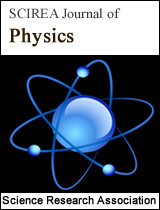Heat-conductivity factor of the gas blanket on the surface of a centrifugal pump
DOI: 201 Downloads 12851 Views
Author(s)
Abstract
Nowadays, the world is facing the depletion of developed reserves and exploitation of fields with poor reservoir features. These factors are forcing oil producers to use low-capacity electric centrifugal submersible pump units (ESP) with pumping pressure of over 2,000 m for oil extraction. The use of such ESP in oil production causes pump temperature to rise to about a hundred degrees centigrade. Increasing the temperature strength of the cable line, used as part of the ESP, reduces the number of failures in terms of the electrical component. However, the operation of a centrifugal pump at high temperatures leads to salt deposits on the pump’s internal components. The theory and methodology of the struggle against salt deposits, as developed by the author of this paper, is described in the works [1-13] and the monograph [14]. The main point discussed in these works deals with identifying the thermal behavior of a centrifugal pump as a function of formation-fluid properties and the parameters of the pump itself. They show that centrifugal pump temperature during the pumping of highly-gassy fluids depends on a number of thermophysical properties of liquid-gas mixtures on the conventional border “surface of a pump’s working components – layer of liquid-gas mixtures on this surface” and on the heat-conducting properties of the oil-associated gas on the surface of the centrifugal pump. Since pump operation is accompanied by high pressure and fluctuating temperature, no laboratory research on said thermophysical properties has been conducted. This work is concerned with theoretical calculation of the heat-conductivity factor of the gas blanket on a centrifugal pump’s surface. This investigation will allow for further development of the theory of a centrifugal pump’s thermal behavior. The ability to calculate temperature depending on operating parameters and the flow characteristics of liquid-gas mixtures will provide for the introduction of automation in the monitoring of centrifugal pump behavior. Finally, the analytical review of the heat-conductivity factor of the gas blanket on a centrifugal pump’s surface will enable us to create a program for controlling and preventing salt deposits inside the pump without the use of chemical treatments.
Keywords
oil production using electric centrifugal pumps, reduction in well-production rate, centrifugal pump heat-up, pump temperature, methane heat-conductivity factor, prevention of salt deposits.
Cite this paper
Adib Akhmetnabievich Gareev,
Heat-conductivity factor of the gas blanket on the surface of a centrifugal pump
, SCIREA Journal of Physics.
Volume 4, Issue 6, December 2019 | PP. 311-326.
References
| [ 1 ] | A.A. Aleksandrov, B.A. Grigoryev Thermal and Physical Properties of Water and Water Vapor/ M. MEI Publishing Company. 1998, pg. 423 |
| [ 2 ] | N.B. Vargaftik, L.P. Fillipov, A.A. Tarzimanov, E.E. Trotsky Reference Guide on the Heat Conductivity of Liquids and Gases. M. Energoizdat, 1990, pg. 352 |
| [ 3 ] | A.A. Gareyev Regarding the significance of thermal condition in electric centrifugal pump units (ESP). “Oborudovaniye i tekhnologii dlya neftegazovogo kompleksa” (Equipment and Technologies for the Oil & Gas Sector), 2009, No. 1. |
| [ 4 ] | A.A. Gareyev Regarding maximum-permissible gas content at centrifugal pump intake. “Oborudovaniye i tekhnologii dlya neftegazovogo kompleksa” (Equipment and Technologies for the Oil & Gas Sector), 2009, No. 2. |
| [ 5 ] | A.A. Gareyev. Mathematical modeling of problems occurring during the operation of ESP with fluctuating pump-shaft load. Automation, telemetry and communication in the oil industry: NTZh, 2010, No. 3. |
| [ 6 ] | A.A. Gareyev. Regarding the gas-separation factor at pump intake. Neftyanoye khozyaistvo, 2010, No. 6, pp. 90-93. - pp.40-45. |
| [ 7 ] | A.A. Gareyev Effect of centrifugal pump efficiency on its thermal behavior. А.А. Gareyev, K.R.Urazakov“Oborudovaniye i tekhnologii dlya neftegazovogo kompleksa” (Equipment and Technologies for the Oil & Gas Sector), 2010, No. 5, pp. 21-24. |
| [ 8 ] | A.A. Gareyev Regarding the thermal behavior of electric submersible pumps. “Oborudovaniye i tekhnologii dlya neftegazovogo kompleksa” (Equipment and Technologies for the Oil & Gas Sector). 2010, No. 6, pp. 35-41. |
| [ 9 ] | A.A. Gareyev Regarding the thermal behavior and thermal shock phenomenon of electric centrifugal pumps (as a matter for discussion).Neftyanoye khozyaistvo, 2011, No. 3, pp. 122-126. |
| [ 10 ] | A.A. Gareyev. Regarding the significance of pressure at electric centrifugal-pump intake / A.A. Gareyev, R.F. Sharafutdinov, R.A. Valiullin Neftyanoye khozyaistvo, 2012, No. 10, pp. 128-131. |
| [ 11 ] | A.A. Gareyev Calculation of gas-separation factor at pump intake. Neftyanoye khozyaistvo (electronic version), 2013, No. 3, pp. 82-85. |
| [ 12 ] | A.A. Gareyev Regarding the salt-deposition mechanism. “Neftepromyslovoye delo” (Oilfield Engineering) NTZh, 2017, No. 4, pp. 35-45. |
| [ 13 ] | A.A. Gareyev Techniques for electric centrifugal-pump operation without salt deposition (task description) “Oborudovaniye i tekhnologii dlya neftegazovogo kompleksa” (Equipment and Technologies for the Oil & Gas Sector), 2018, No. 3, pp. 27-31. |
| [ 14 ] | A.A. Gareyev Current problems of low-capacity electric centrifugal-pump operation during oil extraction. Printing and Publications Center, Bashkir State University. 2013. |
| [ 15 ] | D.A. Labuntsov Physical fundamentals of power engineering. M. MEI Publishing Company, 2000, pg. 388. |
| [ 16 ] | R. Reid, J. Prausnitz, T. Sherwood The Properties of Gases and Liquids Translated from English by B.I. Sokolova. Leningrad “Khimiya” (Chemistry), Leningrad Division. 1982, pg. 592 |
| [ 17 ] | F.F. Tsvetkov, B.A. Grigoryev Heat and mass transfer. M. MEI Publishing Company. 2006, pg. 545 |

